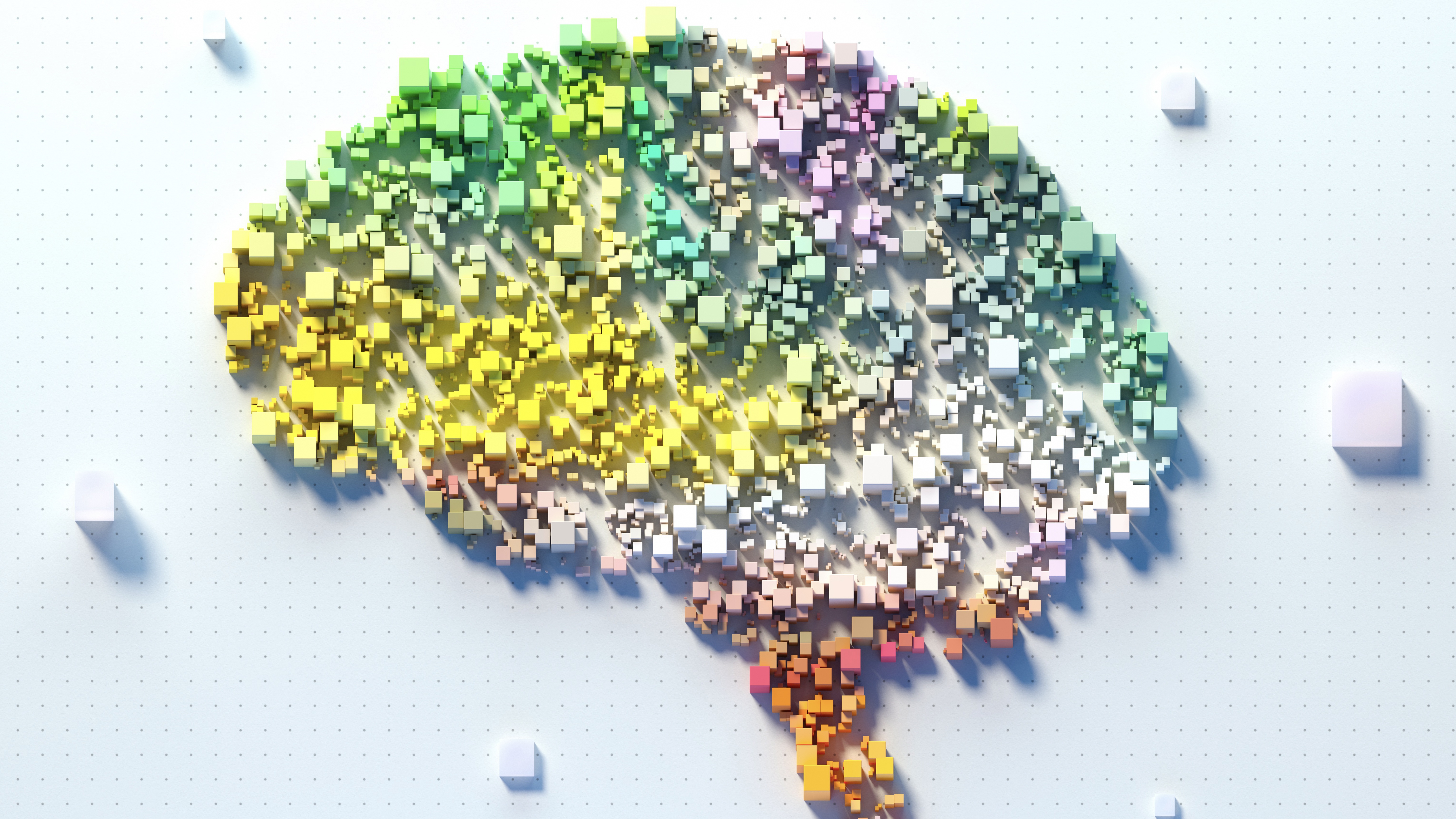What is GPT-4 and what does it mean for businesses?
The next generation of the OpenAI framework - GPT-4 - might change the face of language modelling


OpenAI has announced GPT-4, its latest model that will contribute to the rapidly-developing field of AI in business. Organisations are already making use of increasingly sophisticated AI tools throughout their day-to-day operations, and OpenAI’s GPT-3 and GPT-3.5 have become particularly popular in the last six months, powering the headline-grabbing ChatGPT.
The new model is multimodal, meaning users can use both text and images as inputs and has been heralded as the most creative and powerful yet made by OpenAI. The firm has also stressed that GPT-4 is safer than previous versions, adhering more rigidly to the boundaries set out by its developers and users without sacrificing its capacity for creative output.
GPT-4 vs GPT-3
Across all metrics, GPT-4 is a marked improvement over the models that came before it. Putting aside the fact that it can handle images, long something that has evaded OpenAI’s previous GPT iterations, it is also capable of more nuanced, reliable, and challenging output than GPT-3 or GPT-3.5.
In simulated exams designed for humans, GPT-4 greatly surpassed the results of GPT-3.5. It placed in the 90th percentile for the Uniform Bar versus GPT-3.5’s 10th percentile results and 88th percentile for the LSAT versus GPT-3.5’s 40th percentile. GPT-4 also scored highly in the Massive Multitask Language Understanding (MMLU) benchmark, which puts models up against 14,000 multiple choice questions based on a range of topics not covered in training sets.
OpenAI also claims that GPT-4 outperformed competing large language models (LLMs) like Google’s PaLM and Meta’s LLaMA in a range of machine learning (ML) benchmarks. In the MMLU GPT-4 scored 86% versus GPT-3.5’s 70% and PaLM’s 71%.
Hallam back-end developer Oliver Fokerd notes that while GPT-3 enabled users to input natural language, it still took a bit of skill to craft your prompt in a way that would give good results. “GPT-4 will be much better at inferring users’ intentions,” he adds.
GPT-3 was once thought too dangerous to be released to the public, after early versions showed a propensity for generating misinformation. The model was also accused of exhibiting racism against specific religions and genders. More recent versions use reinforcement learning from human feedback (RLHF), which uses human helpers called labellers to assist the AI in its learning and flag unwanted responses.
Sign up today and you will receive a free copy of our Future Focus 2025 report - the leading guidance on AI, cybersecurity and other IT challenges as per 700+ senior executives
To combat these same fears, OpenAI has committed to more rigorous RLHF for GPT-4 to minimise harmful outputs.
“Our mitigations have significantly improved many of GPT-4’s safety properties compared to GPT-3.5,” OpenAI states in its blog post on GPT-4.
“We’ve decreased the model’s tendency to respond to requests for disallowed content by 82% compared to GPT-3.5, and GPT-4 responds to sensitive requests (e.g., medical advice and self-harm) in accordance with our policies 29% more often.”
RELATED RESOURCE

Recommendations for managing AI risks
Integrate your external AI tool findings into your broader security programs
With regards to the structure and size of GPT-4 versus GPT-3 , OpenAI is keeping its cards close to its chest. The firm has not stated how many parameters GPT-4 has in comparison to GPT-3’s 175 billion, only that the model is “larger” than its predecessor. It has not stated the size of its training data, nor where all of it was sourced aside from "a large dataset of text from the Internet".
GPT-4 has required such a large overhaul that OpenAI rebuilt its entire deep learning stack for the model. It also made use of a supercomputer built in partnership with Microsoft Azure, for which GPT-3.5 was used as a dry run to ensure stability issues were resolved.
What are the business benefits of GPT-4?
A standout feature of GPT-4 is its multimodal nature, which allows businesses to feed it a wider range of data than ever before. Firms can use the model to summarise PDFs, aggregate and contextualise chart data, analyse and critique contracts, or quickly identify visual irregularities in physical infrastructure.
OpenAI’s president and co-founder Greg Brockman demonstrated the degree to which GPT-4 can extract and process information from images by sketching a mockup of a website into a sketchpad, which was then translated into the working HTML for the website by GPT-4.
The model’s image processing capabilities also make it an ideal workhorse for computer vision systems. OpenAI has stated that in addition to recognising objects and scenes within images, the model is capable of providing suggestions based on context within these images.
The app Be My Eyes, which pairs people who are blind or have low vision with volunteers who help them navigate everyday tasks via video call, has tested a virtual volunteer with GPT-4. It was able to provide recipe ideas based on an image of a fridge’s contents, but could also assist with complex tasks such as navigating a train system.
The firm is bringing the same tech to screen readers, enabling disabled users to access websites and computer systems through advanced descriptions of the key elements on a page, summaries of search results, or talking users through content management systems that were not built with navigability in mind.
Its prowess with languages other than English also opens up GPT-4 to businesses around the world, which can adopt OpenAI’s latest model safe in the knowledge that it is performing in their native tongue at a higher level than GPT-3.5 could in English. It also has potential for international trade and contract negotiations, with the model capable of translating, summarising, and analysing written text and screenshots in one fluid process.
This could be especially helpful for AI use in cyber security, with firms like Secureworks already having found success in using LLMs to aggregate and translate threat actor posts on the dark web.
Another new feature of GPT-4 that businesses could find particularly useful is its greater adherence to the boundaries set out by its training and by users. OpenAI highlights its improved ‘steerability’, which keeps GPT-4 in line with instructions while reducing "hallucinations", a common issue in generative AI where models begin to confidently lie.
Brockman demonstrated the potential of this steerability by instructing GPT-4 to act as ‘TaxGPT’, a chatbot that can read and apply the tax code while explaining its steps in detail. It was then able to provide advice on the standard deductions available for a theoretical couple.
Businesses can use the same steerability functions to improve the user experience of chatbots that will eventually run on GPT-4 through ChatGPT API, or make internal systems more helpful and company-specific. For example, a chatbot that explained company processes and regulations could be tailored by job description and experience so that employees always receive information at an accessible level.
This could also prove useful for training purposes, which are already being demonstrated by Khan Academy in its use of GPT-4 as a source of knowledge and context for students seeking to learn maths, science, and humanities. The same principles apply to the GPT-4’s vast array of knowledge, meaning business leaders could use the model to upskill workers on subjects like programming or other languages to beat talent shortages rather than let the model replace workers altogether.
When can my business use GPT-4?
If your business is subscribed to OpenAI’s paid tier ChatGPT Plus, you now have access to GPT-4 as a chat model. Firms that wish to integrate GPT-4 into their stack via ChatGPT API will have to wait a little longer, however, with OpenAI currently accepting applications for its GPT-4 waitlist.
Firms that submit model evaluations deemed high quality through OpenAI’s ‘Evals’ service may also receive access to GPT-4 early. So if GPT-3 or GPT-3.5 are already part of your stack, this could be a route for early adoption of the powerful new model.
On the other hand, if your business is using Microsoft’s Bing AI then you may have used GPT-4 without even knowing it. The Redmond giant has admitted that its search engine AI has been powered by the new model all along, giving some indication of the performance that can be expected from GPT-4 on a widespread scale through chatbot boundaries.

Rory Bathgate is Features and Multimedia Editor at ITPro, overseeing all in-depth content and case studies. He can also be found co-hosting the ITPro Podcast with Jane McCallion, swapping a keyboard for a microphone to discuss the latest learnings with thought leaders from across the tech sector.
In his free time, Rory enjoys photography, video editing, and good science fiction. After graduating from the University of Kent with a BA in English and American Literature, Rory undertook an MA in Eighteenth-Century Studies at King’s College London. He joined ITPro in 2022 as a graduate, following four years in student journalism. You can contact Rory at rory.bathgate@futurenet.com or on LinkedIn.
-
 Trump's AI executive order could leave US in a 'regulatory vacuum'
Trump's AI executive order could leave US in a 'regulatory vacuum'News Citing a "patchwork of 50 different regulatory regimes" and "ideological bias", President Trump wants rules to be set at a federal level
-
 TPUs: Google's home advantage
TPUs: Google's home advantageITPro Podcast How does TPU v7 stack up against Nvidia's latest chips – and can Google scale AI using only its own supply?